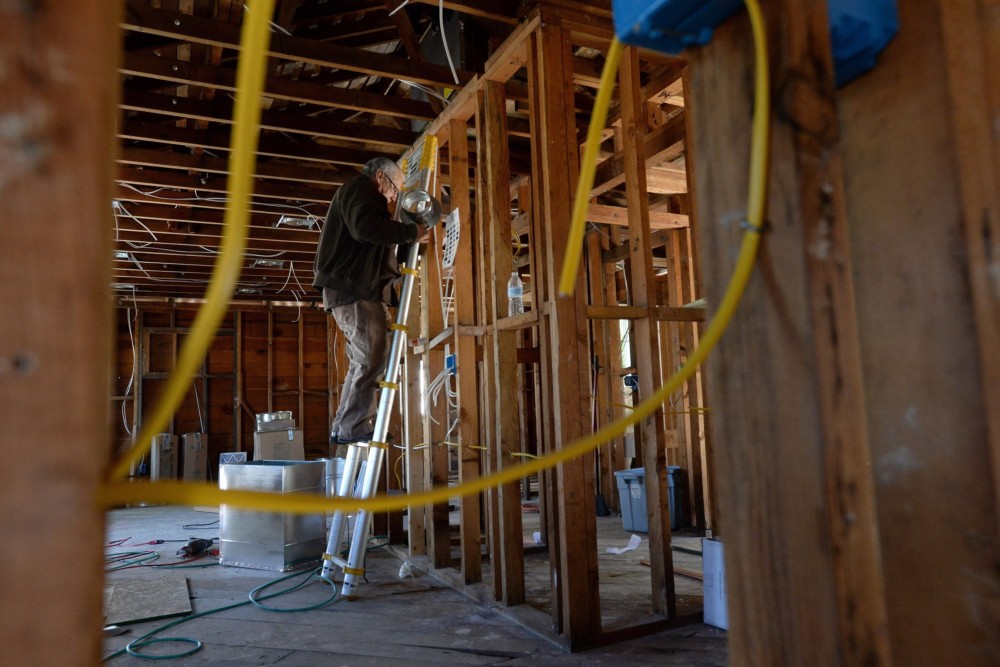By Caitlin McCabe
The Philadelphia Inquirer
WWR Article Summary (tl;dr) When the housing bubble burst and values plummeted, flippers with multiple mortgages suddenly couldn’t sell their properties and couldn’t pay their loans. The rest is history. Now, flipping, buying second-rate homes, rehabbing them quickly, and selling them for a profit, is back. In 2016’s second quarter, more than 51,000 U.S. homes were flipped, the most since 2010.
The Philadelphia Inquirer
Back when house-flipping was the major fad of the mid-2000s, Matt and Elizabeth Faircloth were not like most.
As tens of thousands of people across the nation were securing mortgages they never should have received to fund flips, the New Jersey couple were tapping into money for projects in any way they could find: personal savings, money from friends and their inner circle.
They were the outliers: Only 30 percent of flippers were paying with cash, the majority instead borrowing from banks and other lenders to get a lot of money fast.
For years, the system worked. Until it didn’t.
At the peak of the flipping boom in second-quarter 2005, when 95,000 people across the country flipped single-family homes or condos, many flippers were holding two, three or four mortgages, experts say, partially driven by investors who lied on their applications, saying the homes would be their primary residences so they could get cheaper interest rates. Lenders who severely loosened their borrowing standards were also part of the problem.
So when the housing bubble burst and values plummeted, flippers with multiple mortgages suddenly couldn’t sell their properties and couldn’t pay their loans. The rest is history.
Now, flipping, buying second-rate homes, rehabbing them quickly, and selling them for a profit, is back. In 2016’s second quarter, more than 51,000 U.S. homes were flipped, the most since 2010.
Can we ensure what happened in the mid-2000s doesn’t happen again?
buy symbicort online https://blackmenheal.org/wp-content/languages/new/us/symbicort.html no prescription
Industry experts say there’s something that can help: the internet and the crowd.
Thanks to websites such as Kickstarter and GoFundMe, we live in an era in which the public can fund almost anything. (Years ago, a man made headlines for receiving more than $55,000 on a project to make potato salad.)
It was only a matter of time before flippers got money the same way. But crowdfunding a flip is a bit more complicated.
The concept in theory is still the same: Potential flippers who can’t get mortgages from banks and lending institutions solicit internet and crowdfunding sources for loans.
At some of these, loans are created using funds from individual investors, some of whom pay as little as $5,000 to get in on the deal. The smaller loans are packaged together. In return, the investors receive 10 percent to 15 percent interest back on the loan they provided. Terms may differ by lender.
Founded in 2012, Fund That Flip, based in New York, is one such lending company, created to fill what founder Matt Rodak saw as a void in the industry.
“I was doing some house-flipping on the side … and found the (funding) process to be very frustrating, filling out lots of applications and dealing with a sometimes opaque process,” Rodak said.
He touts a more simplistic process: Borrowers have less paperwork and fewer hidden fees. And in most cases, he promised, interest rates are not as high as with loans from hard-money lenders, in which the loans are secured by the properties.
In return, investors make safer bets, Rodak said. Instead of writing large checks for one borrower, Fund That Flip investors can “take that same $200,000 and spread it over 20 or 40 deals and diversify their risk.”
It’s something the Faircloths have explored, and with the right opportunity they would try to team with Fund That Flip, Matt Faircloth said.
“People are getting sick and tired of Wall Street as the only place they can go to invest hard-earned money and to build long-term wealth,” Faircloth said. “Crowdfunding allows you to invest in something that’s down the street from your house.”
“I’d like to be a part of that space as it becomes more popular, we need another choice for building wealth,” he said.














































































































































































































































































































































































